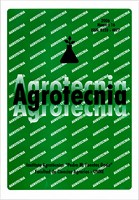Collection of registered pesticides, acaricides and fungicide for the harvest of cucurbitaceae in Argentina
DOI:
https://doi.org/10.30972/agr.0336903Keywords:
Cucurbitaceae, active ingredient, innocuousnessAbstract
The large and diverse horticultural production in Argentina is carried out intensively and extensively in all the territory, even as subsistence farming carried out by families. Horticultural crop products are mainly sold fresh which is the reason why they must fulfill innocuousness requirements for family consumption. According to this, the chemical control over the variety of pests that harm this production must rely on duly registered phytosanitary products with low impact on the environment. Phytosanitaires must be responsibly well-managed, considering waiting period and correct dosage in each case. As a result, bibliographic compilation of registered phytosanitary products for the Cucurbitaceae family was carried out. That would help technicians make decisions on the various situations that arise in the field when opting for chemical control. This work includes charts for each species traditionally produced in NEA, elaborated with the active ingredients registered for: pumpkin, melon, cucumber, watermelon, squash and zucchini. Moreover, this work provides the Environmental Impact Quotient (EIQ) values that correspond to each use recommendation made in order to offer other criteria for the selection of the active ingredient to be used.



